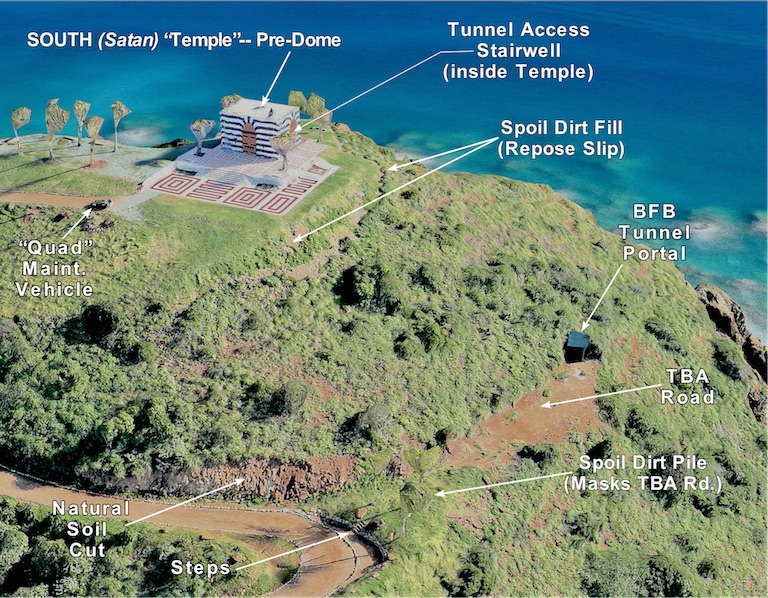- Look for places where roads dead-end -- especially into hillsides. (See Q drop #1001: "Where do roads lead?"
EXAMPLE: Iran's "Fordo" underground Uranium enrichment facility:

- It also is common for tunnel entrances to be disguised by placing them beneath or inside "other function" structures like the "Main Entrance" at Iran's "Fordo" site, above -- or, in LSJI's case, inside "Temples".
- Look for structures that remain where boring started -- as tunnel entrances or as portals for maintenance access or ventilation. (See Qdrop #1007: "Bunker Forest Blue" [aka "BFB"])
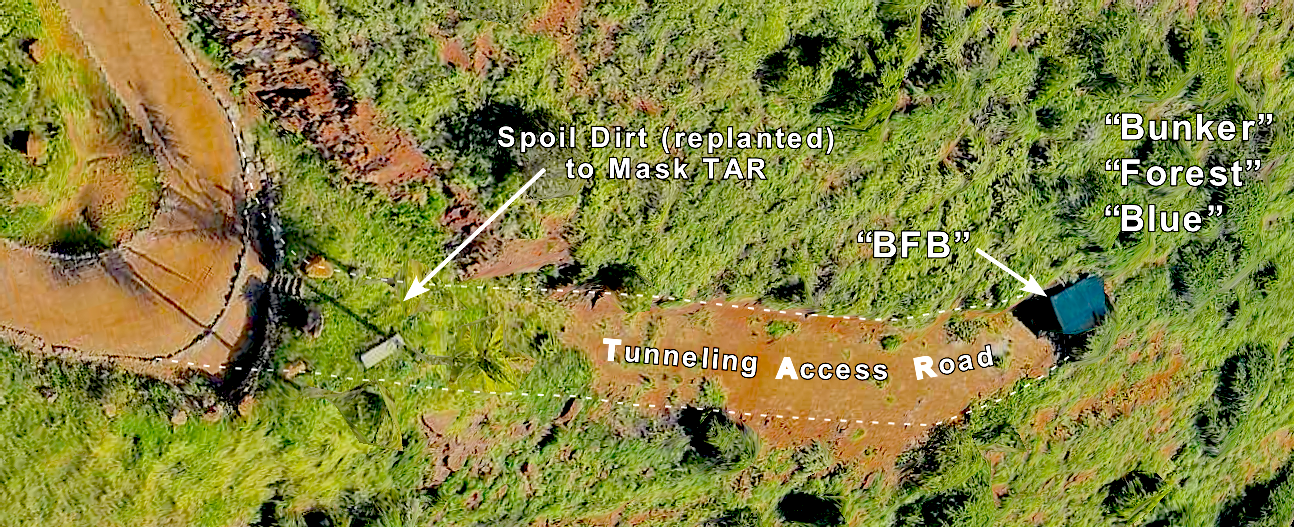
- Spoil Dirt typically differs from surrounding surface soil in albedo, color, texture, fertility and/or angle of repose requirement.
- Most tunnelers (even quasi-clandestine ones) dispose of Spoil Dirt in thousands of overlapping dump-load piles, which produces a "pimply" appearance -- as at Iran's "Parchin" nuclear materials facility:
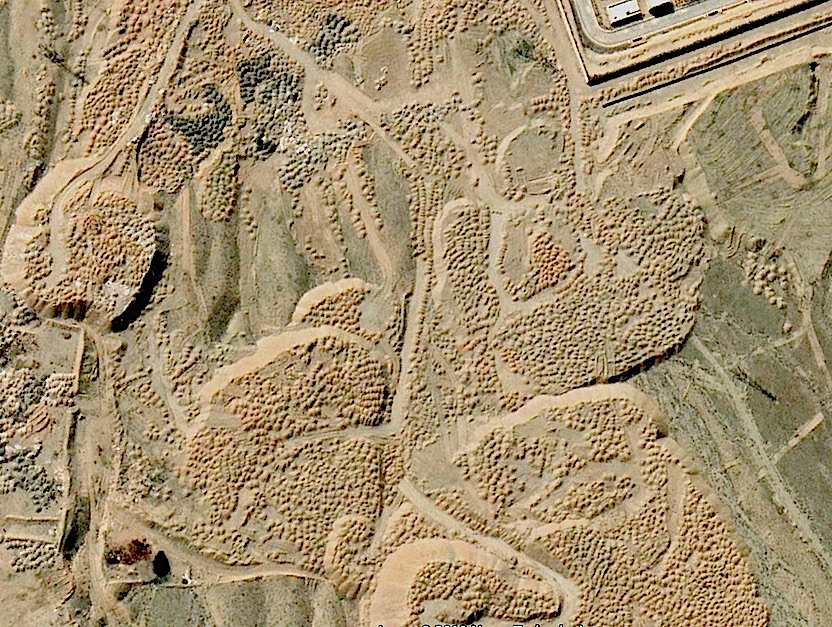
The color and albedo of the spoil dirt also contrasts with the natural soil surface (at lower right and bottom left center).
- Epstein and his construction engineers were more clever. They disposed of the spoil dirt from tunnel excavations by using it -- for extensive 3-D landscaping, for road building, for leveling building sites, etc.
- And -- when they had more spoil dirt than they could use -- they simply "hid it in plain sight":
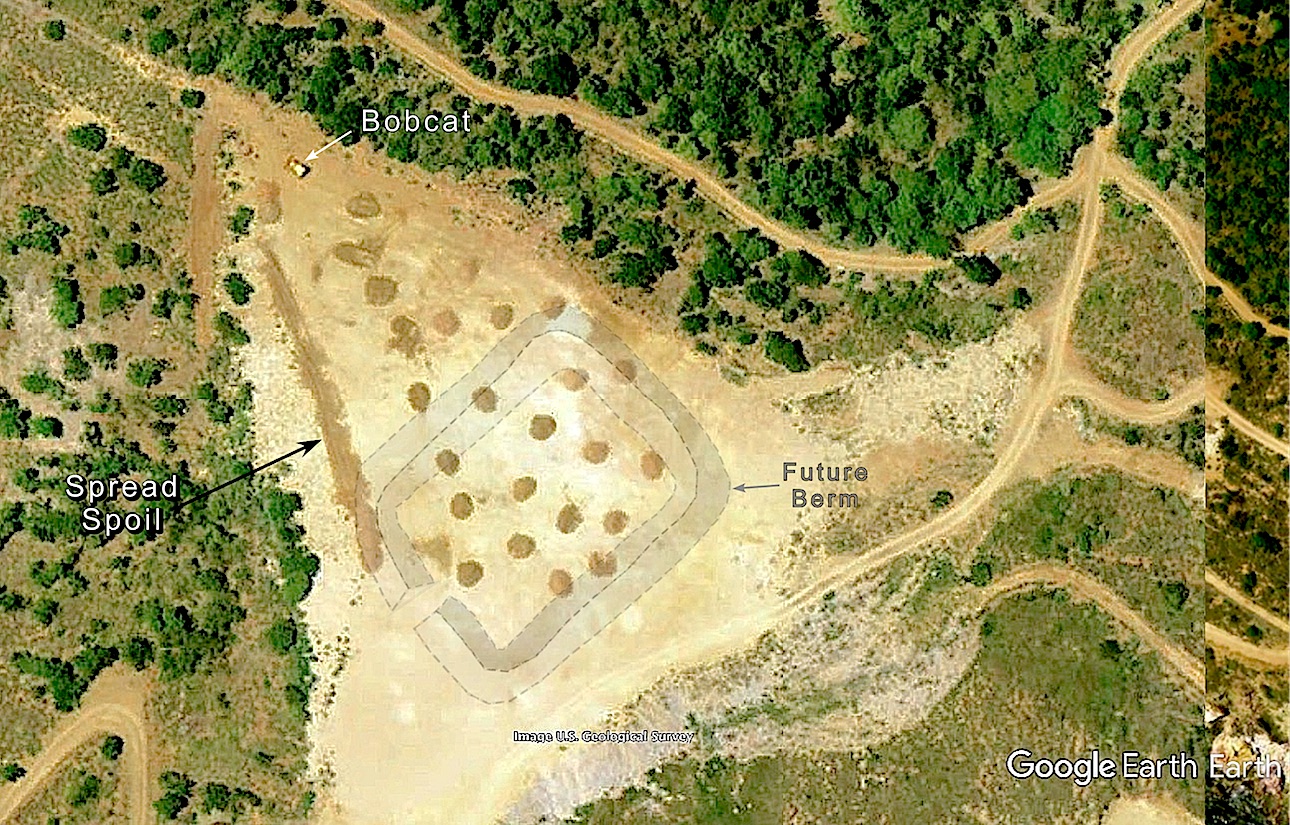
- Nearly 10,000 cubic yards of spoil dirt was disposed of in that massive, "in-your-face" "berm" that surrounds the "Tennis Court" area.

- A large, but indeterminate, volume of spoil dirt was disposed by spreading it along the tops and sides of LSJI's major ridges:
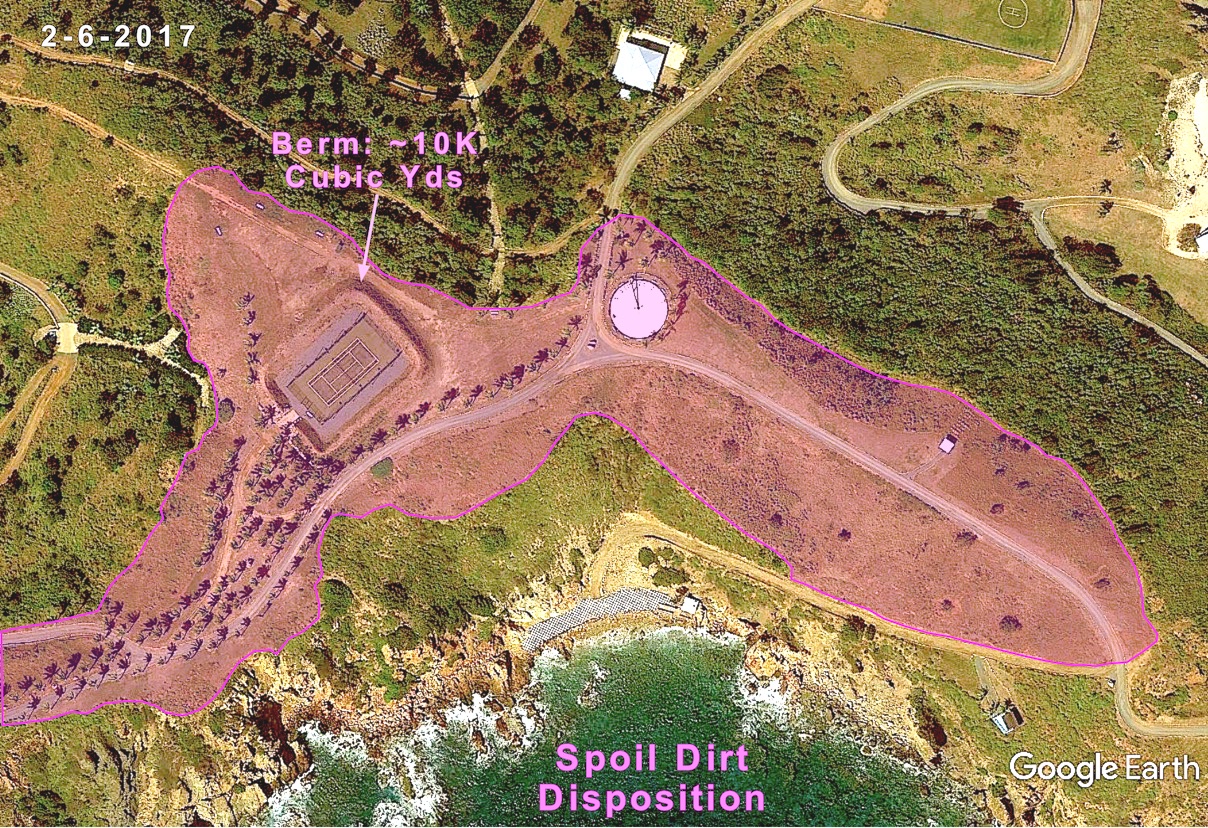
- Nearly 10,000 cubic yards of spoil dirt was disposed of in that massive, "in-your-face" "berm" that surrounds the "Tennis Court" area.
Finally, an Apple Maps view that illustrates the above tunnel-identifying principles:
